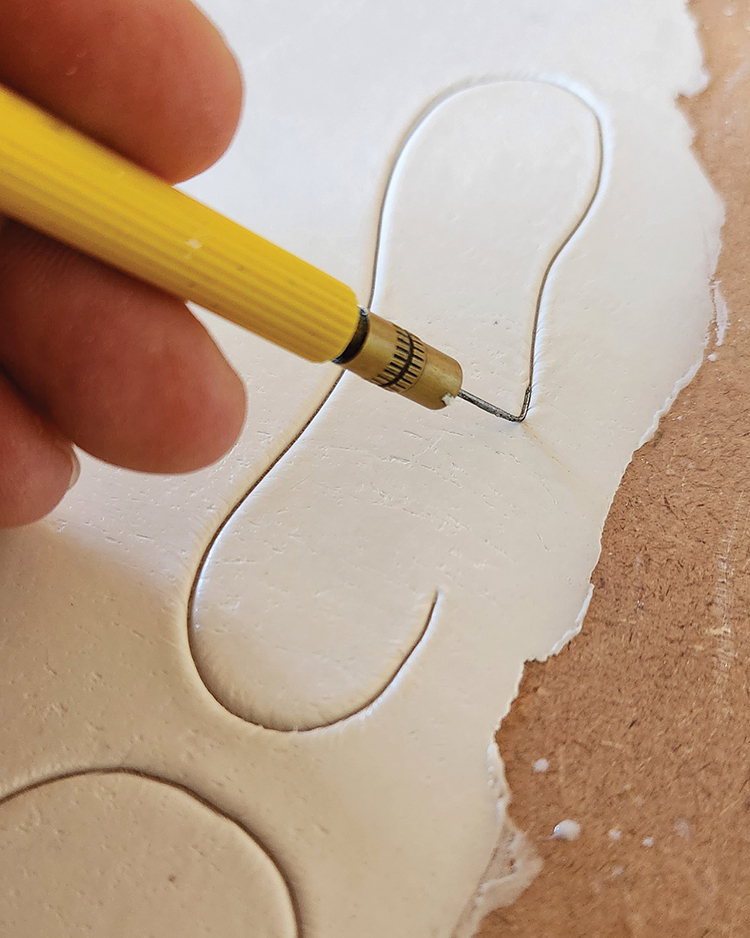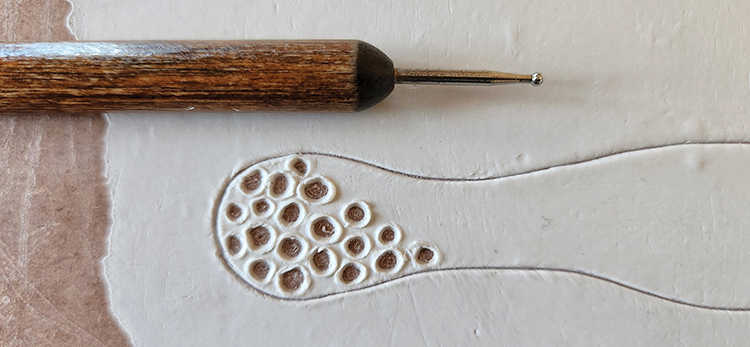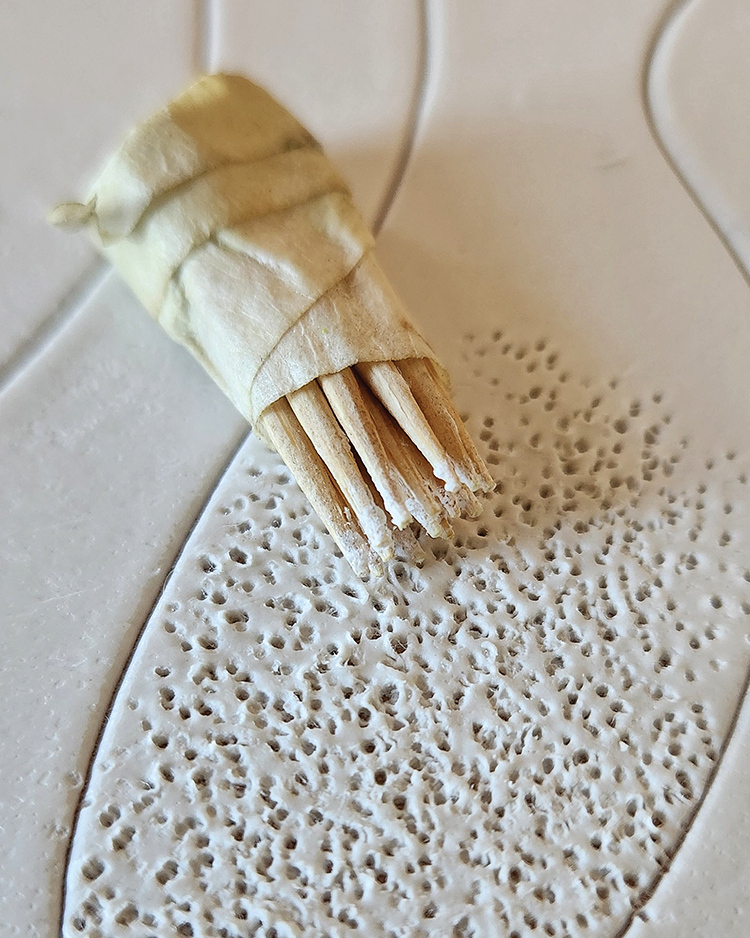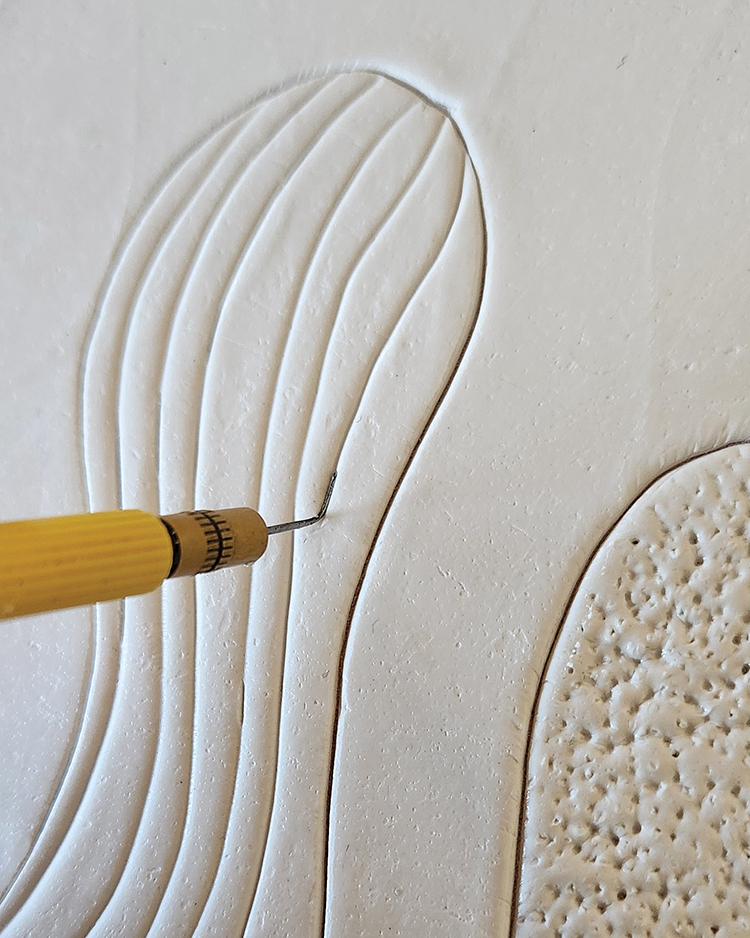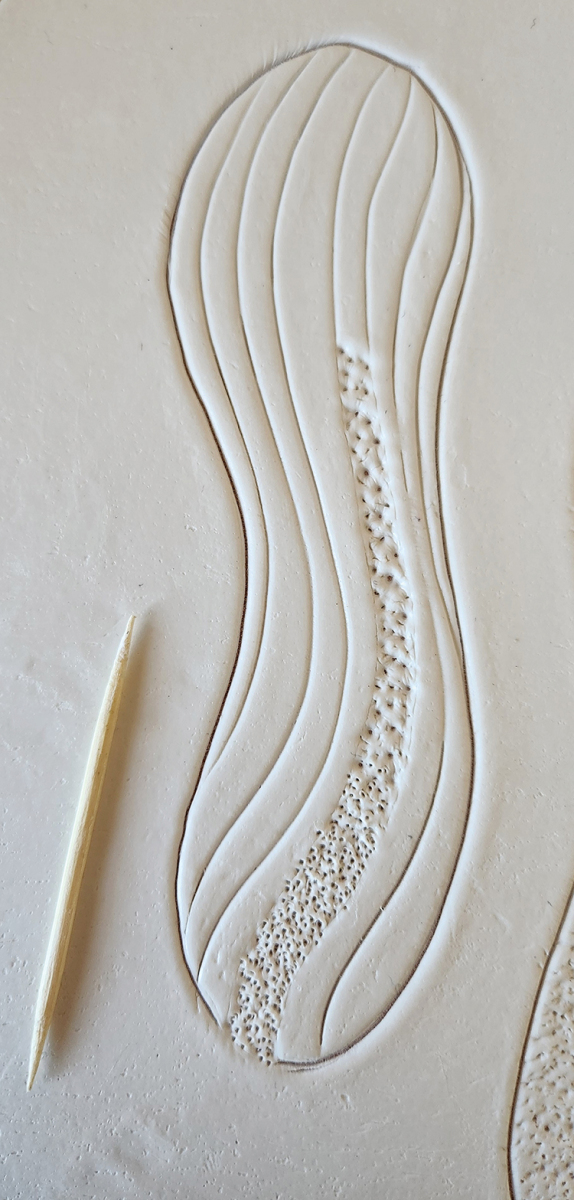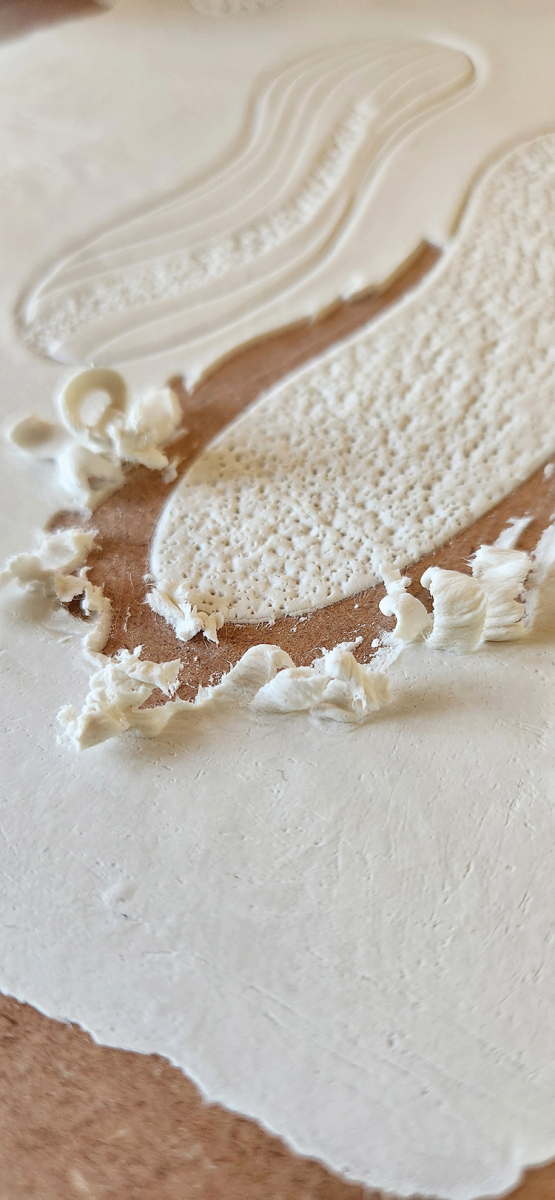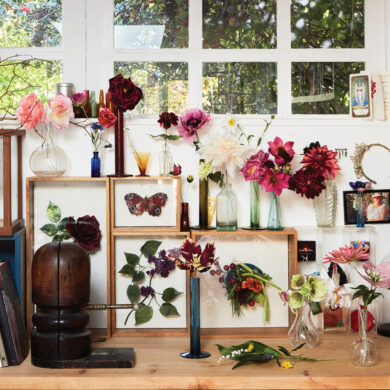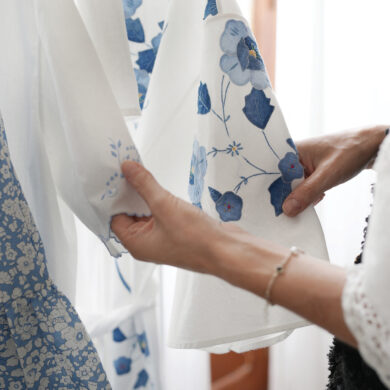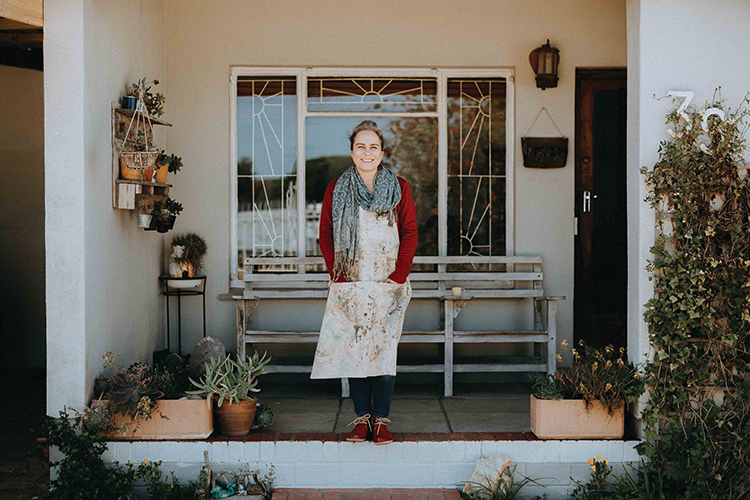
THE LOVE FOR ART
Art has always been a central point in my life. Since my childhood years, I always wanted to be a full-time artist. One of our family friends’ daughters was my biggest inspiration when I was very young. She was a brilliant artist and I dreamt of being able to paint like her one day.
My school subjects included ceramics and sculpture. After matriculating in 1997, I furthered my studies and obtained a diploma in art direction for film and television, as well as an advanced diploma in motion picture production design. Following this, I worked in the film industry before starting my lecturing career at a local film school. I lectured in the art department — teaching sculpting, mould- ing, casting, painting, props fabrication, special effects and prosthetics. In 2017, after 14 years of lecturing, I decided to quit.
I did not know what the future would hold, but I had to follow this deep urge to make my lifelong dream a reality. I wanted to be a full-time artist and it was now or never! It was a matter of taking a leap of faith and going all in.
My two favourite art forms have always been sculpture and painting. When I resigned as lecturer I made a strategic decision to focus on sculpture. I had to do something unique to stand out. This is how the air-dry clay sculptures were born — a unique medium to stand out from the crowd but also a clay medium to satisfy my love for working with clay.
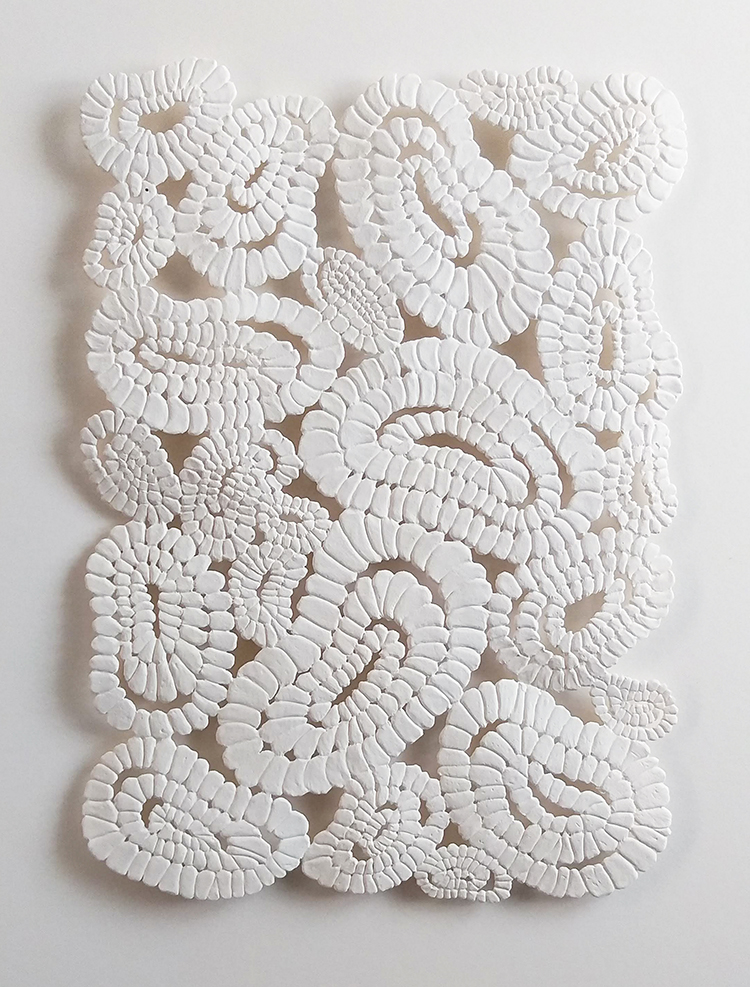
CONNECTION
As a recovering alcoholic in my eighth year of sobriety, I have met and found a connection with a diverse range of people that suffer from the same disease. Even in our cultural differences, I become aware of a shared humanity and our similar vulnerabilities. I have found that human connectivity is a powerful catalyst for healing.
This feeling of connection spills over into my art. I don’t necessarily have a favorite subject matter, but an overarching theme is that my work is born from a profound recognition that, although our circumstances differ, essentially we all share a common humanity and an inherent desire for connection.
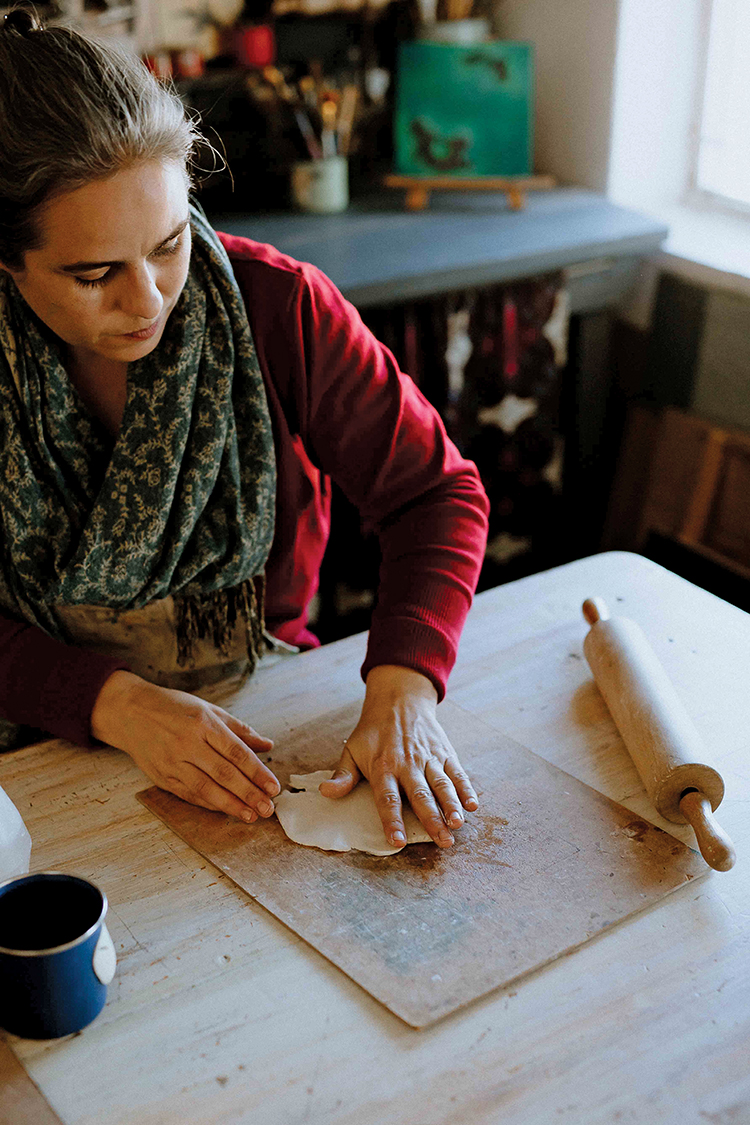
THE STORY OF HOW I CAME TO WORK WITH THIS MEDIUM
I have always had a love for clay. When I was a lecturer, it often happened that students arrived at class with the wrong clay. I would then experiment with it and compare it to others. One day a colleague introduced me to a clay variant I hadn’t encountered before. Intrigued, I took a small ball of this air-drying clay home.
It remained forgotten until a last-minute need for a friend’s wedding present prompted me to experiment with it. I hastily rolled it out thinly and simply pressed fynbos (a vegetation native to this area) into the clay. The next morning, I saw with great surprise what the clay had done during the night. It dried and warped and separated from the wooden board on its own. I was amazed.
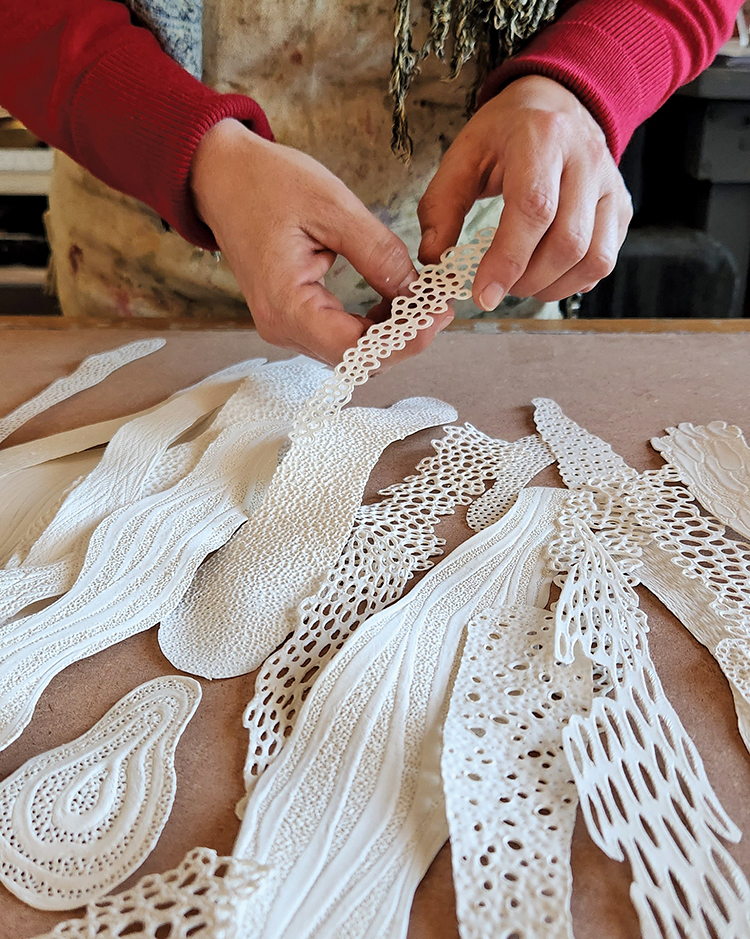
Fast-forward to about two years later, when I quit my lecturing career: I had a meeting with myself on January 2, 2018, thinking about how I was going to approach this challenge of breaking into the fine art scene. It was at this point that the clay wedding gift popped up again.
My realization was that I had not come across anything like this in galleries. I thought it might be a new, unique thing to introduce into the art arena. Must say, it was a bit of a gamble, because air-drying clay has a type of stigma attached to it as only something used in kiddies’ craft projects. But my gut said: Here is something that comes out of the ether, and I must honor and follow it. It was like a gift from the universe.
That same year I entered the StateoftheART Gallery Award, and won the competition with this new art form. Paper-thin sculptural works of air-drying clay. Couldn’t believe it!
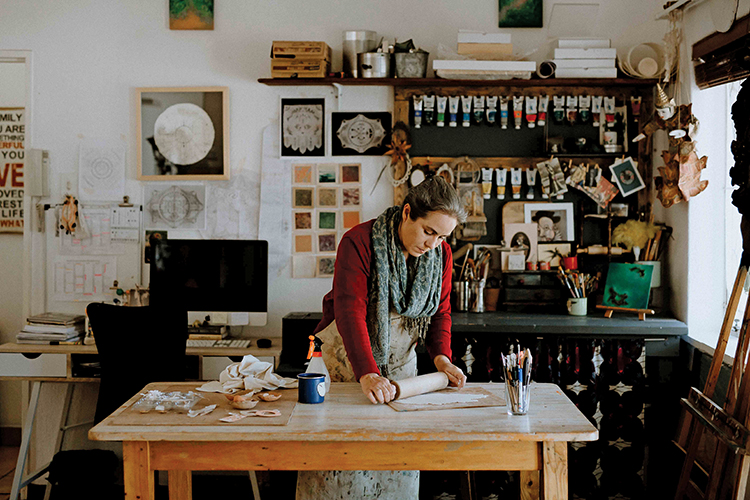
MY STUDIO
I work from home. My tiny studio is in my lounge. The area I claimed is a small space in the corner of the room that (much to my family’s dismay) also includes the dining room table.
For a long time, I felt embarrassed as an artist. I did not have an away-from-home studio with crisp natural lighting, white walls and ample space with shelving. But soon I realized these things are all issues of my own perception of what an artist studio “should” look like. Comparing my own to those of others, I am not embarrassed anymore. This is my studio. The little corner with all my favourite things that inspire. It holds everything I need — from paints, clay, brushes, pencils and other materials to special things like a Picasso print my friend brought back from Spain, a miniature duster of ostrich feathers from my aunt, the card I made for my gran’s memorial and other random hoardings of bones and things. I am grateful that I have a place to call my studio. I love my little corner studio.
PROCESS
I call my artwork “light relief sculptures.” It is created from an air-drying clay medium that is rolled out until paper thin to create delicate bas-relief sculptures.
My late grandmother had a large collection of crocheted doilies in her house. The variety of patterns always caught my eye — especially to observe how the areas of the crocheted wool and the negative spaces in between visually support each other. The very first works I created from air-drying clay had a strong focus on geometric shapes inspired by my grandmother’s doilies, which I inherited after her death.
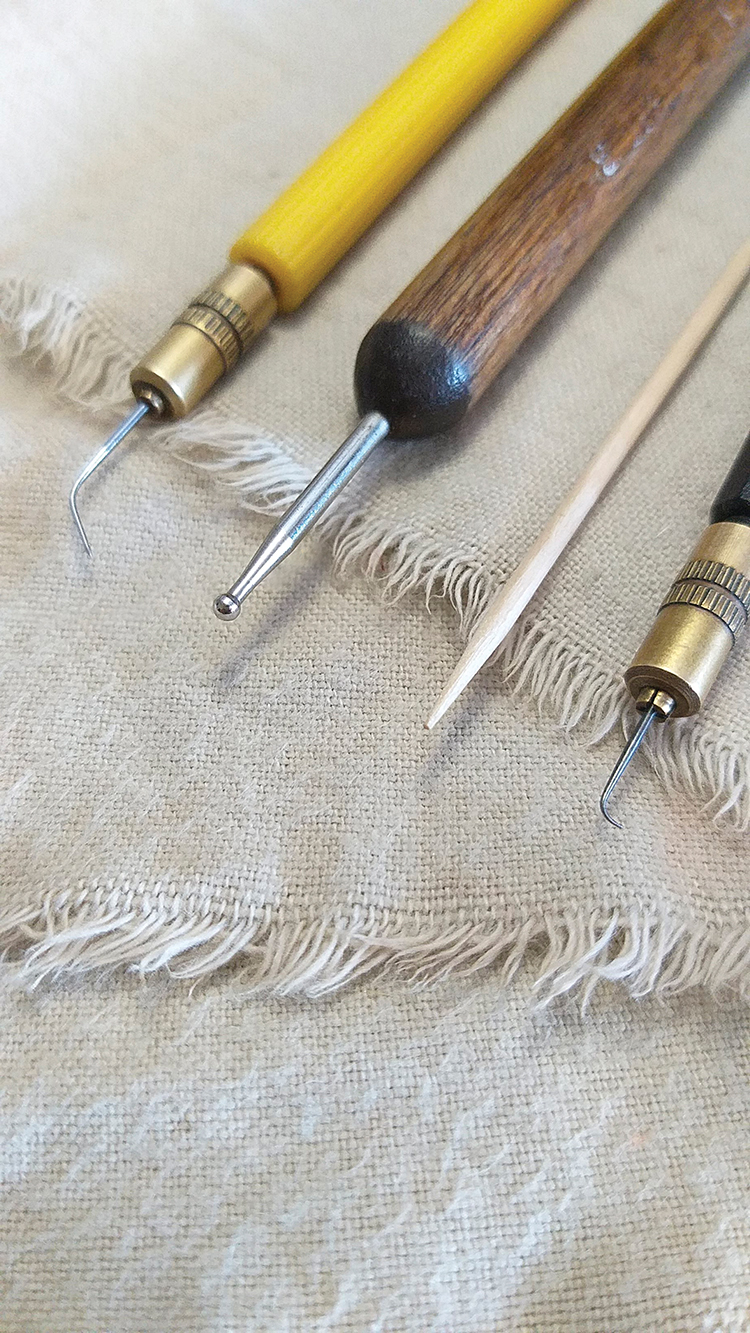
Funnily enough, the tools I’m currently working with are also related to crochet. I sculpt with a knotting needle. It is used in the film industry to make fake beards, mustaches and wigs. It looks like a tiny bent crochet needle — the most amazing tool to use, especially when I need to cut out areas or create fine detail lines on top of the clay.
Along with the knotting needle, I use other unusual sculpting tools such as toothpicks. I score, press and poke the damp surface of the clay with indents, holes and incisions. While I am busy with a piece, the moisture in the clay must be preserved. Usually, I place a damp cloth over the clay or spritz with water while I work on parts that are exposed.
Part of my creative challenge is to push the medium to its breaking point, encouraging it to warp in the process. The big challenge is the fact that the clay base is so thin. If one is not careful, it is easy to accidentally wipe away clay or unconsciously press in the wrong place and end up on the wooden board. Sometimes I hold my breath when I’m busy with fine detail.
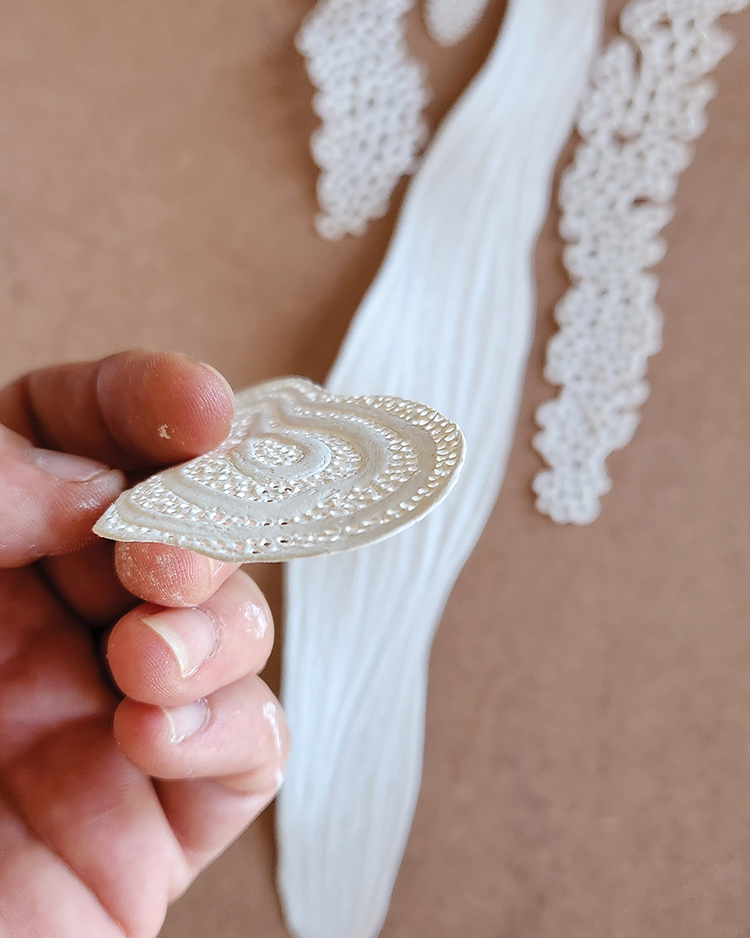
I am a sucker for texture. I love looking at texture, touching it and creating it. Growing up in the countryside instilled in me a love for nature. I love finding details in my garden. Like the beautiful patterns on succulents and disintegrated gooseberry husks. Or on the shield frond of my staghorn fern. Even the textures and cavities present on beach rocks and bark found in my garden. All of this inspires me and spills over into my art process.
There is a certain meditative quality in the repetitive nature of punching tiny holes with a toothpick during the art-making process to recreate or reimagine a certain texture.
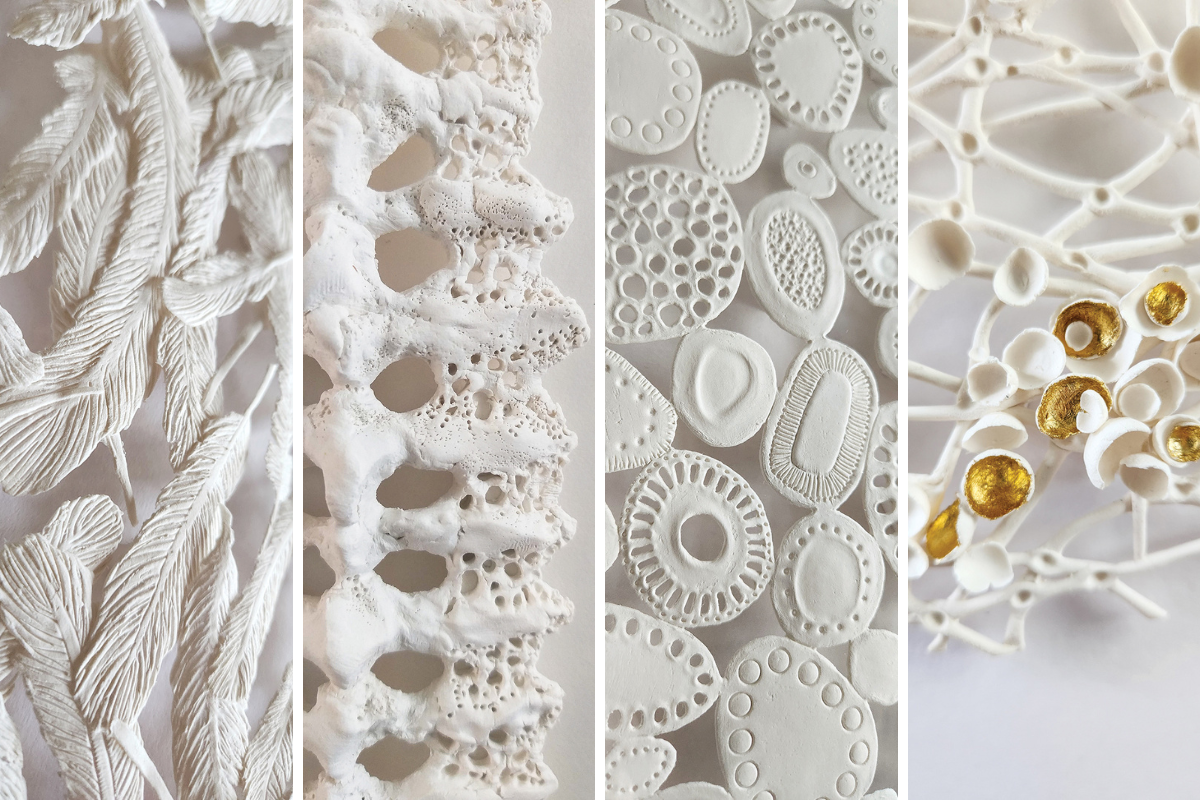
When I have finished sculpting, I remove the cloth and leave the piece for her to do as she pleases. At that point, I no longer have control over the outcome. This is where the magic lies and what makes these sculptures special. With the warping effect being unique to each piece, it’s like Christmas. It’s always a surprise to go to my studio the next morning and see what happened during the night.
Sometimes, a piece decides to warp in the middle, sometimes more on the sides, sometimes all-over-the-show. I like the element of surprise and that the sculptures “finish” themselves. Especially for a perfectionist like me, it’s quite an interesting time. You feel you lose control over the final product, but at the same time the anticipation of the unknown is quite exciting. You don’t know what the end product will look like. I can only manipulate the clay up to a point, and then I have to let go.
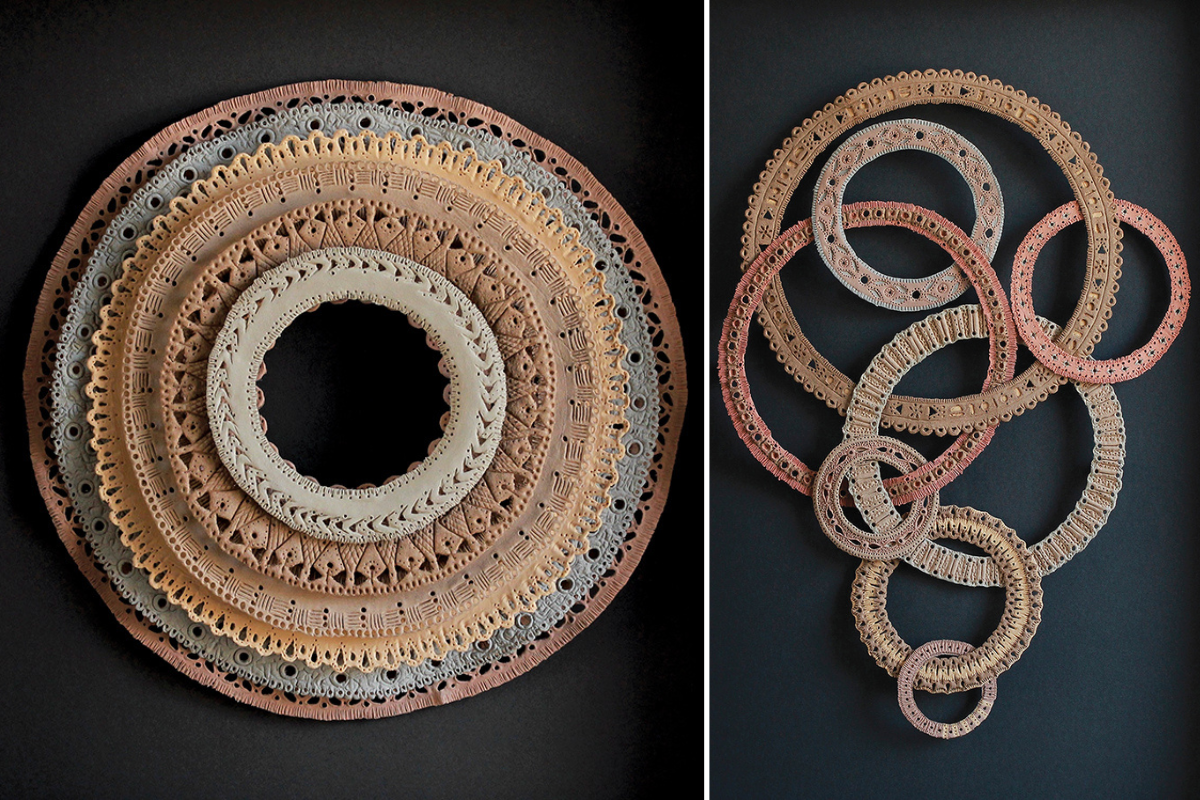
ABOUT COLOR AND TEXTURE
The color and texture of the clay reminds me of ivory and bone. The general symbolism of white in Western cultures represents purity, peace and calm. The lightness of the color and the feather-light weight of the dried clay enhances this sense of vulnerability, fragility, beauty, serenity, or innocence — a neutral space. In contrast, in Eastern cultures, white symbolizes death, grief, afterlife and mourning, reflecting the remains when we decay to dust. This duality brings a stillness of mind, embracing the extremes.
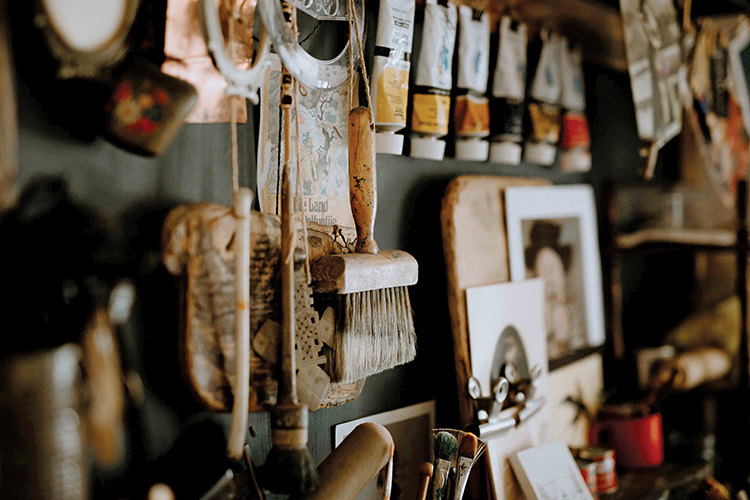
PROUD MOMENTS
I’m proud to be one of the artists featured in a new publication: Clay Formes. The publication is dedicated to clay within the context of contemporary South African art, spotlighting 30 artists who work with clay in various ways. It was published by Art Formes (www.artformes.com).
WHAT’S NEXT
I have works in homes and galleries around the globe and am currently exhibiting in South Africa, the U.K., and Spain. Future aspirations are to exhibit in more countries and grow an even larger international audience.
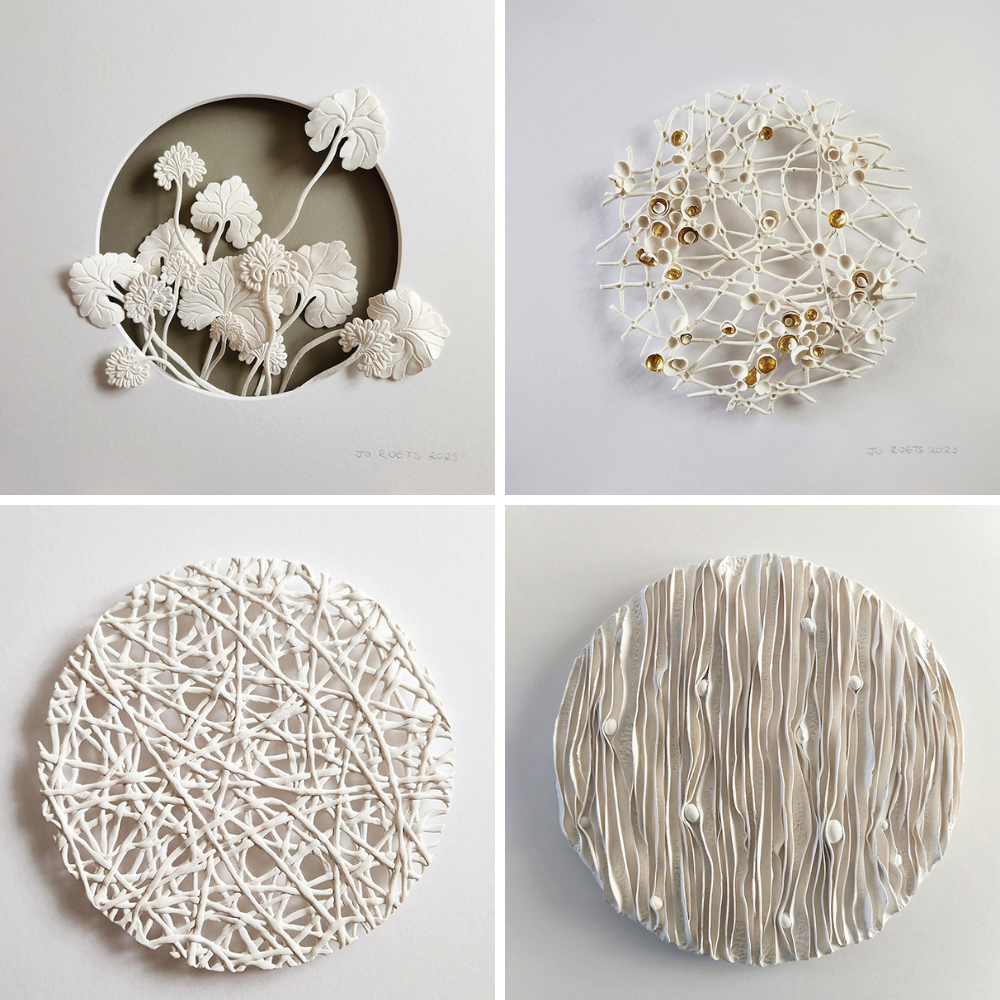
LAST WORDS
All my creative energy and love were focused for 14 years on serving and helping young artists explore and grow within their own creative journey. When I resigned as a lecturer and started walking my own path, it felt like the floodgates of creativity opened. Years of bottled-up creativity began to flow out. It was and still is a constant stream and a type of obsession with expressing it to see what will happen next.
I won’t be able to live without making art. I constantly think about it. I dream about it. It’s like oxygen to me.

THE LOVE FOR ART
Art has always been a central point in my life. Since my childhood years, I always wanted to be a full-time artist. One of our family friends’ daughters was my biggest inspiration when I was very young. She was a brilliant artist and I dreamt of being able to paint like her one day.
My school subjects included ceramics and sculpture. After matriculating in 1997, I furthered my studies and obtained a diploma in art direction for film and television, as well as an advanced diploma in motion picture production design. Following this, I worked in the film industry before starting my lecturing career at a local film school. I lectured in the art department — teaching sculpting, mould- ing, casting, painting, props fabrication, special effects and prosthetics. In 2017, after 14 years of lecturing, I decided to quit.
I did not know what the future would hold, but I had to follow this deep urge to make my lifelong dream a reality. I wanted to be a full-time artist and it was now or never! It was a matter of taking a leap of faith and going all in.
My two favourite art forms have always been sculpture and painting. When I resigned as lecturer I made a strategic decision to focus on sculpture. I had to do something unique to stand out. This is how the air-dry clay sculptures were born — a unique medium to stand out from the crowd but also a clay medium to satisfy my love for working with clay.

CONNECTION
As a recovering alcoholic in my eighth year of sobriety, I have met and found a connection with a diverse range of people that suffer from the same disease. Even in our cultural differences, I become aware of a shared humanity and our similar vulnerabilities. I have found that human connectivity is a powerful catalyst for healing.
This feeling of connection spills over into my art. I don’t necessarily have a favorite subject matter, but an overarching theme is that my work is born from a profound recognition that, although our circumstances differ, essentially we all share a common humanity and an inherent desire for connection.

THE STORY OF HOW I CAME TO WORK WITH THIS MEDIUM
I have always had a love for clay. When I was a lecturer, it often happened that students arrived at class with the wrong clay. I would then experiment with it and compare it to others. One day a colleague introduced me to a clay variant I hadn’t encountered before. Intrigued, I took a small ball of this air-drying clay home.
It remained forgotten until a last-minute need for a friend’s wedding present prompted me to experiment with it. I hastily rolled it out thinly and simply pressed fynbos (a vegetation native to this area) into the clay. The next morning, I saw with great surprise what the clay had done during the night. It dried and warped and separated from the wooden board on its own. I was amazed.

Fast-forward to about two years later, when I quit my lecturing career: I had a meeting with myself on January 2, 2018, thinking about how I was going to approach this challenge of breaking into the fine art scene. It was at this point that the clay wedding gift popped up again.
My realization was that I had not come across anything like this in galleries. I thought it might be a new, unique thing to introduce into the art arena. Must say, it was a bit of a gamble, because air-drying clay has a type of stigma attached to it as only something used in kiddies’ craft projects. But my gut said: Here is something that comes out of the ether, and I must honor and follow it. It was like a gift from the universe.
That same year I entered the StateoftheART Gallery Award, and won the competition with this new art form. Paper-thin sculptural works of air-drying clay. Couldn’t believe it!

MY STUDIO
I work from home. My tiny studio is in my lounge. The area I claimed is a small space in the corner of the room that (much to my family’s dismay) also includes the dining room table.
For a long time, I felt embarrassed as an artist. I did not have an away-from-home studio with crisp natural lighting, white walls and ample space with shelving. But soon I realized these things are all issues of my own perception of what an artist studio “should” look like. Comparing my own to those of others, I am not embarrassed anymore. This is my studio. The little corner with all my favourite things that inspire. It holds everything I need — from paints, clay, brushes, pencils and other materials to special things like a Picasso print my friend brought back from Spain, a miniature duster of ostrich feathers from my aunt, the card I made for my gran’s memorial and other random hoardings of bones and things. I am grateful that I have a place to call my studio. I love my little corner studio.
PROCESS
I call my artwork “light relief sculptures.” It is created from an air-drying clay medium that is rolled out until paper thin to create delicate bas-relief sculptures.
My late grandmother had a large collection of crocheted doilies in her house. The variety of patterns always caught my eye — especially to observe how the areas of the crocheted wool and the negative spaces in between visually support each other. The very first works I created from air-drying clay had a strong focus on geometric shapes inspired by my grandmother’s doilies, which I inherited after her death.

Funnily enough, the tools I’m currently working with are also related to crochet. I sculpt with a knotting needle. It is used in the film industry to make fake beards, mustaches and wigs. It looks like a tiny bent crochet needle — the most amazing tool to use, especially when I need to cut out areas or create fine detail lines on top of the clay.
Along with the knotting needle, I use other unusual sculpting tools such as toothpicks. I score, press and poke the damp surface of the clay with indents, holes and incisions. While I am busy with a piece, the moisture in the clay must be preserved. Usually, I place a damp cloth over the clay or spritz with water while I work on parts that are exposed.
Part of my creative challenge is to push the medium to its breaking point, encouraging it to warp in the process. The big challenge is the fact that the clay base is so thin. If one is not careful, it is easy to accidentally wipe away clay or unconsciously press in the wrong place and end up on the wooden board. Sometimes I hold my breath when I’m busy with fine detail.

I am a sucker for texture. I love looking at texture, touching it and creating it. Growing up in the countryside instilled in me a love for nature. I love finding details in my garden. Like the beautiful patterns on succulents and disintegrated gooseberry husks. Or on the shield frond of my staghorn fern. Even the textures and cavities present on beach rocks and bark found in my garden. All of this inspires me and spills over into my art process.
There is a certain meditative quality in the repetitive nature of punching tiny holes with a toothpick during the art-making process to recreate or reimagine a certain texture.

When I have finished sculpting, I remove the cloth and leave the piece for her to do as she pleases. At that point, I no longer have control over the outcome. This is where the magic lies and what makes these sculptures special. With the warping effect being unique to each piece, it’s like Christmas. It’s always a surprise to go to my studio the next morning and see what happened during the night.
Sometimes, a piece decides to warp in the middle, sometimes more on the sides, sometimes all-over-the-show. I like the element of surprise and that the sculptures “finish” themselves. Especially for a perfectionist like me, it’s quite an interesting time. You feel you lose control over the final product, but at the same time the anticipation of the unknown is quite exciting. You don’t know what the end product will look like. I can only manipulate the clay up to a point, and then I have to let go.

ABOUT COLOR AND TEXTURE
The color and texture of the clay reminds me of ivory and bone. The general symbolism of white in Western cultures represents purity, peace and calm. The lightness of the color and the feather-light weight of the dried clay enhances this sense of vulnerability, fragility, beauty, serenity, or innocence — a neutral space. In contrast, in Eastern cultures, white symbolizes death, grief, afterlife and mourning, reflecting the remains when we decay to dust. This duality brings a stillness of mind, embracing the extremes.

PROUD MOMENTS
I’m proud to be one of the artists featured in a new publication: Clay Formes. The publication is dedicated to clay within the context of contemporary South African art, spotlighting 30 artists who work with clay in various ways. It was published by Art Formes (www.artformes.com).
WHAT’S NEXT
I have works in homes and galleries around the globe and am currently exhibiting in South Africa, the U.K., and Spain. Future aspirations are to exhibit in more countries and grow an even larger international audience.

LAST WORDS
All my creative energy and love were focused for 14 years on serving and helping young artists explore and grow within their own creative journey. When I resigned as a lecturer and started walking my own path, it felt like the floodgates of creativity opened. Years of bottled-up creativity began to flow out. It was and still is a constant stream and a type of obsession with expressing it to see what will happen next.
I won’t be able to live without making art. I constantly think about it. I dream about it. It’s like oxygen to me.












